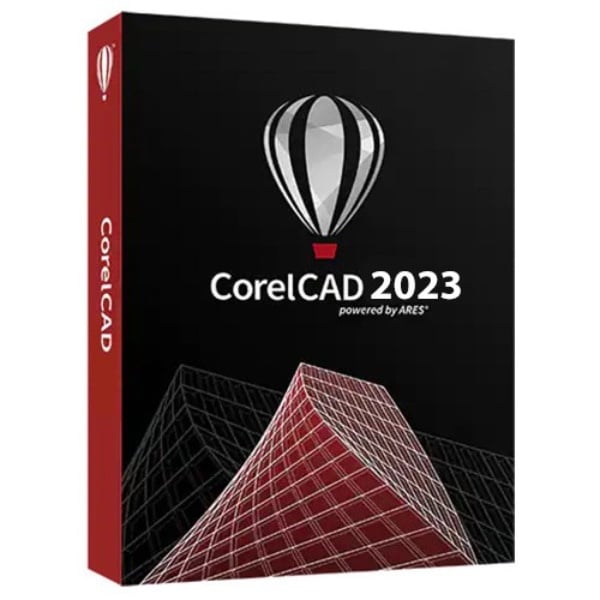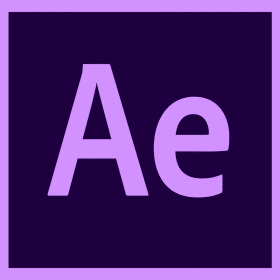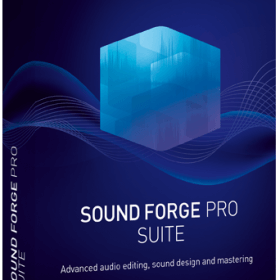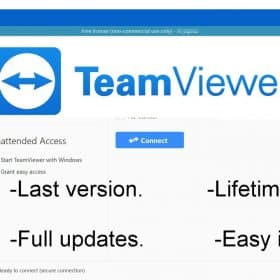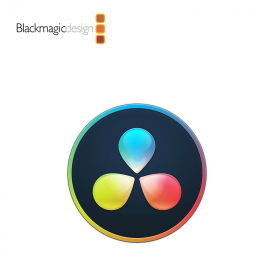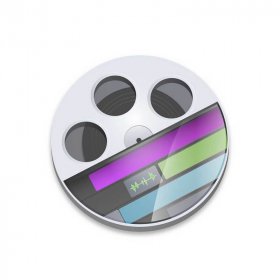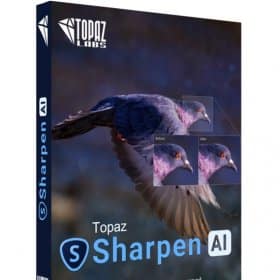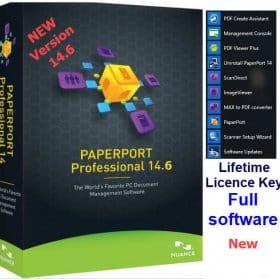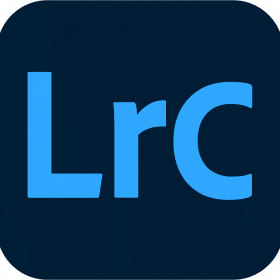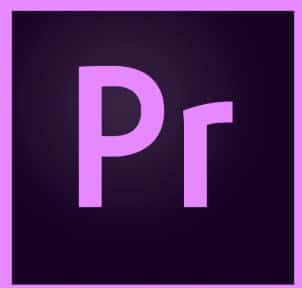Topazlabs DeNoise AI Image – Noise reduction – Windows
$49.99 Original price was: $49.99.$29.99Current price is: $29.99.
16 Item Sold
Lifetime Activation
For Windows
Comes with activation files
-
Description
Description
Topazlabs DeNoise AI Image: The Noise Solution You’ve Been Waiting For.
A good photograph is about timing. You seek to capture the fleeting light at the end of the day that paints a landscape in rosy hues, or those quieter moments when a city sleeps. Often, this means having to work with reduced light levels, when sensor noise has a greater chance of creeping in. TopazLabs DeNoise AI is a trusted and superb tool for noise reduction that preserves details – it’s like you’re a magician with a camera.


And Topazlabs DeNoise AI is not just another noise-reduction filter. It uses advanced AI to perceive the difference between the undesired noise and the important details in an image. So it’s like having a second pair of eyes that never miss a thing. Except these eyes are powered by recent advancements in AI. These eyes are built to serve photographers and creatives with specific knowledge of their needs to produce work that’s simply *better*. So what exactly makes DeNoise AI amazing? Let’s break it all down.
Effortless Noise Reduction Without Sacrificing Quality
Reducing noise in photos often involved playing with fire: the more you reduced noise, the more detail you’d have to sacrifice. It was frustrating because cleaning up one area of your shot would often mean blurring up others, turning your photo into a mushy mess of half-seen details.
Where DeNoise AI really comes into its own is when your images have been shot at higher ISOs, in low light or both. The software analyses the photo, detects where the noise is, and then removes it where possible, while at the same time protecting the sharpness of key features. It’s like having a magic eraser for noise – but instead of smudging it away all over the place, it does it very precisely.
How DeNoise AI Works
Buttons aren’t enough. What else to the table? Well just a matter of pressing a button and having the noise removed from your photos. Don’t get me wrong, it’s incredibly simple to use for that, if that’s all you want to do! This is where things get exciting: Topazlabs DeNoise AI has a brilliant understanding of your photos and how to improve them. How does it do this? Well, its AI has been trained on a library of images that is simply mind-blowing in its size. In essence, it knows what is ‘noise’ and what is ‘important detail’. DeNoise AI takes this knowledge and, when you press the button to clean up your image, it analyses the specific image you’re working with to determine exactly how to do this, and is able to do this incredibly quickly.
It’s a Windows version. It’s Lifetime Activated, so once you activate it, you are good for life — no monthly subscription, no renewal each year, no problem. Just install it once, and you’re ready to go.

Key Features of Topazlabs DeNoise AI
1. AI-Powered Noise Reduction
This is the secret to DeNoise AI. The machine learning-powered engine of the software doesn’t indiscriminately remove noise, it knows the architecture of the image. It learns from millions of patterns in images, and can take away noise while leaving all those little details untouched. You no longer have to worry that your images will look dull and lifeless after the noise is removed – DeNoise AI keeps the texture and colours that are true to life, and give your images a sense of reality.
2. Recovering Details
The truly exciting aspect to DeNoise AI, beyond usual noise reduction tools, is its ability to retrieve and even improve detail while removing noise. Has there ever been an image that came out flattened due to your having to pump up the noise reduction in post-processing? DeNoise AI has you covered. The tool identifies edges, lines and natural textures, so that you can reduce noise without sacrificing the quality of your shots.
3. Batch Processing
If you’re a photographer shooting loads of images at once, for example, the thought of manually running through the entire batch to reduce noise to your liking is enough to make you cringe. Topazlabs DeNoise AI saves you from this potential nightmare with its batch processing operation. You can select multiple images, set your desired settings, and let the software run its course, saving you time and effort. This is especially helpful when shooting in low light or at high ISOs, where you might have an entire set of shots plagued by excessive noise.
4. Compatibility with Your Workflow
One of the real highlights of DeNoise AI is that, however you want to use it, it can sit right alongside however you’re already working. Insert it into your existing workflow for any RAW or JPEG image, in Adobe Photoshop or Lightroom, in Capture One, or in any of the other image-editing applications that you prefer, and everything will work as you’re expecting. You don’t need to change how you work, you just add DeNoise AI as another finishing touch.
And the single-tracker mode also makes it useful as a standalone instrument, without needing another software to drive it; this too is a big deal, both for hobbyists and professionals.
5. Intuitive Interface
Don’t be afraid to spend a lot of time trying to figure it out. Topazlabs DeNoise AI’s interface is really user-friendly and intuitive. Even those who are new to noise reduction can easily figure out what they need to do to get the results they want. All the sliders and settings are clearly arranged so you can easily find what you need and control the noise reduction level to your liking, as well as enhancing the sharpness to bring out the details while keeping it all simple.
6. Real-Time Preview
Click through a bunch of options and then hit Apply? No, thanks. With Topazlabs DeNoise AI, you can watch the changes in real-time as you make them. That means you can dial in the sliders before you actually apply the change, so you know exactly what you’re doing – and what the results will be – before you click the button. You can play with the noise reduction slider, then see how it looks, then dial it back if you want to, and on and on and on. You can experiment to your heart’s content without having to play Russian roulette with your settings.
7. Support for RAW, JPEG, and More
DeNoise AI can be used with a number of file formats, including RAW, JPEG, TIFF, PNG – whatever you can throw at it. This makes it a useful tool for photographers who want the end result to be indistinguishable from the original image quality. RAW support also means that when you are editing, you get to keep the highest possible quality, allowing you to get the most out of each and every pixel your camera captured.


8. Lightning-Fast Processing
DeNoise AI isn’t just powerful – it’s also fast. This is because we have made sure that the processing algorithms are as fast as possible, and because we have implemented support for modern hardware (including GPU acceleration). This allows DeNoise AI to generate results in a matter of moments, without any long waiting times to render the noise reduction effect. Load your images, make your settings, and watch DeNoise AI work its magic in a matter of moments.
Why Choose Topazlabs DeNoise AI?
If you are a photographer, amateur or professional, your work depends on presenting your images in the best possible light. Topazlabs DeNoise AI is not just about removing noise, it is about removing noise in a way that looks like it was taken with that noise in mind in the first place. Here are some of the reasons why DeNoise AI might be what you are after:
No Quality Sacrifices: The best of both worlds: images that are clear, with no noise and all the natural detail you love – from the bird’s feathers to the textures of the landscape. DeNoise AI keeps what you love and eliminates what you don’t.
Lifetime Activation: No subscription fees, no expiration to worry about. Once you activate Topazlabs DeNoise AI, it’s yours for life. You can relax knowing Topazlabs has your back, so you can focus on what you love: your photography.
Works for all kinds of noise: From digital grain seen in low-light shooting to a high ISO, or older photos with a bit of grain, DeNoise AI is capable of adapting to all those noise problems. Some might require different kinds of treatment than others and the AI models are fine-tuned to adapt when necessary.
A versatile tool: If you are a professional photographer, the precise SPARK Technology contained in DeNoise AI is essential for eliminating unwanted noise and achieving pin-sharp images. If you are an amateur photographer capturing the everyday moment, or an artistic hobbyist looking to experiment with new photographic ideas, DeNoise AI can help you bring to life your creative ideas. Or, if you are generating images to use on social media, for your website or blog, you’ll need the best possible image – and DeNoise AI makes it easy to attain that level of quality, every time. With its intuitive user interface, anyone can use it, no matter your experience level.

Loyal Updates and Support: Topazlabs have made a commitment to their user base by providing regular updates that improve DeNoise AI over time. Lifetime activation includes these updates so you’ll continue to receive improvements and new features as they become available.
Tips for Getting the Most Out of DeNoise AI
Side-by-Side Views: You can see your edits side by side in DeNoise AI. Look at your noisy image and then look at the denoised image. Since they’re right next to each other, it makes it much easier to see how far to move the sliders to get to your desired result.
Play with different AI models: DeNoise AI offers a variety of AI models, some that work better for heavier noise, others for more naturally occurring, fine detail. Play, experiment and go with what works best for your specific image.
Use ‘Recover Original Detail’ Slider: If you now find your image looking a bit too clean, perhaps like a plastic toy, then try using the ‘Recover Original Detail’ slider to add some of the original detail back. You are always looking for the best balance between clean and real.
Use a Batch Process When You Can: Save time at the end of a long day of shooting with the batch processing feature. Process all your photos at once, then spend your saved time honing your creative edits, or just enjoying the act for its own sake.
Topazlabs DeNoise AI – made for a smoother photography life. Still a stunning image … with no more noise! For all those pictures you took that you fell in love with, only to look at it closer and find the noise that ruined the magic … with lifetime activation you never need to look over your shoulder for subscription renewals. Just install and activate and be prepared for noise reduction made for working with you, not against you.
The next time you’re shooting under a dim sky or indoors, don’t let the noise keep you from taking the shot. Click confidently, and let Topazlabs DeNoise AI do its magic so you can keep your memories beautiful.









